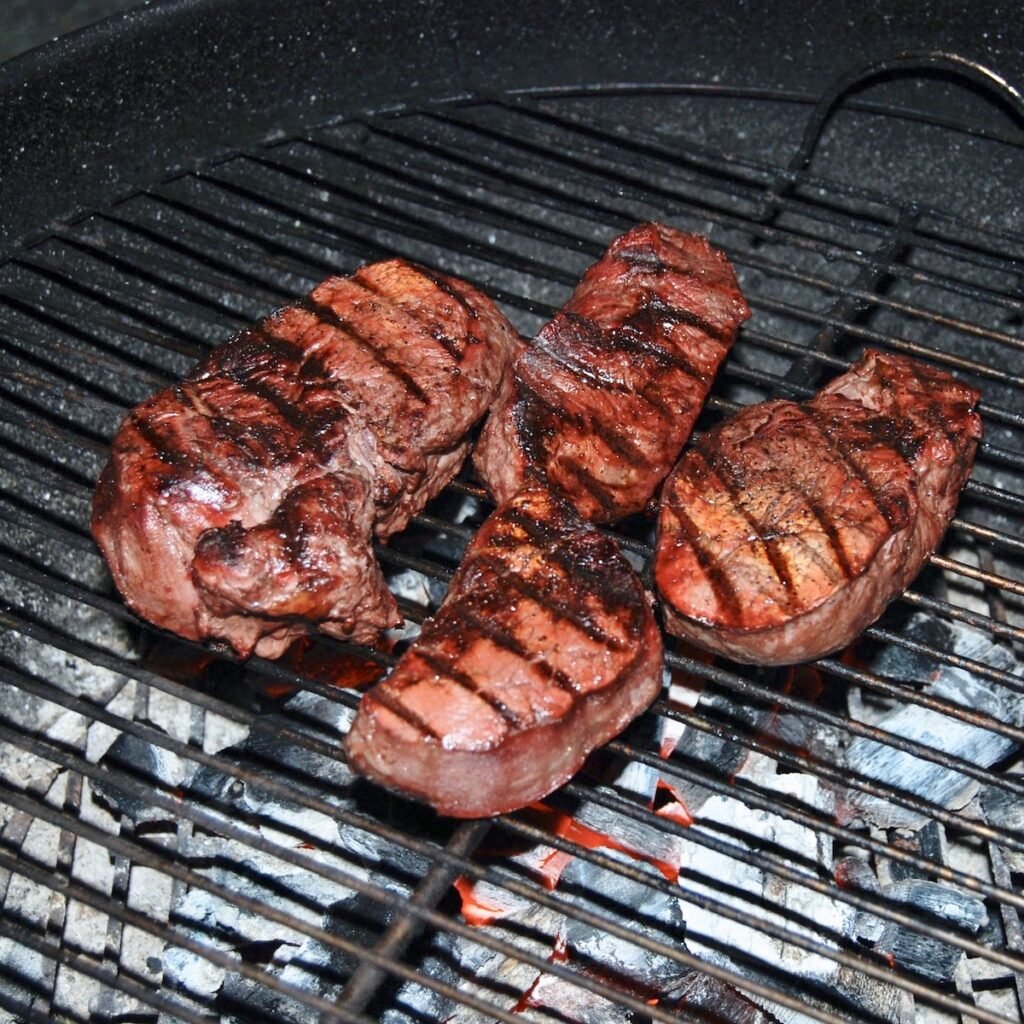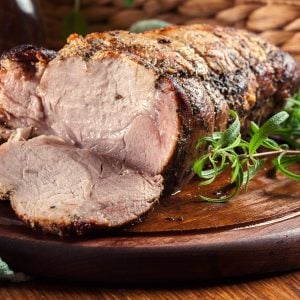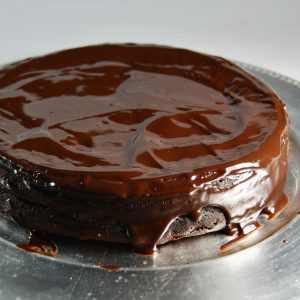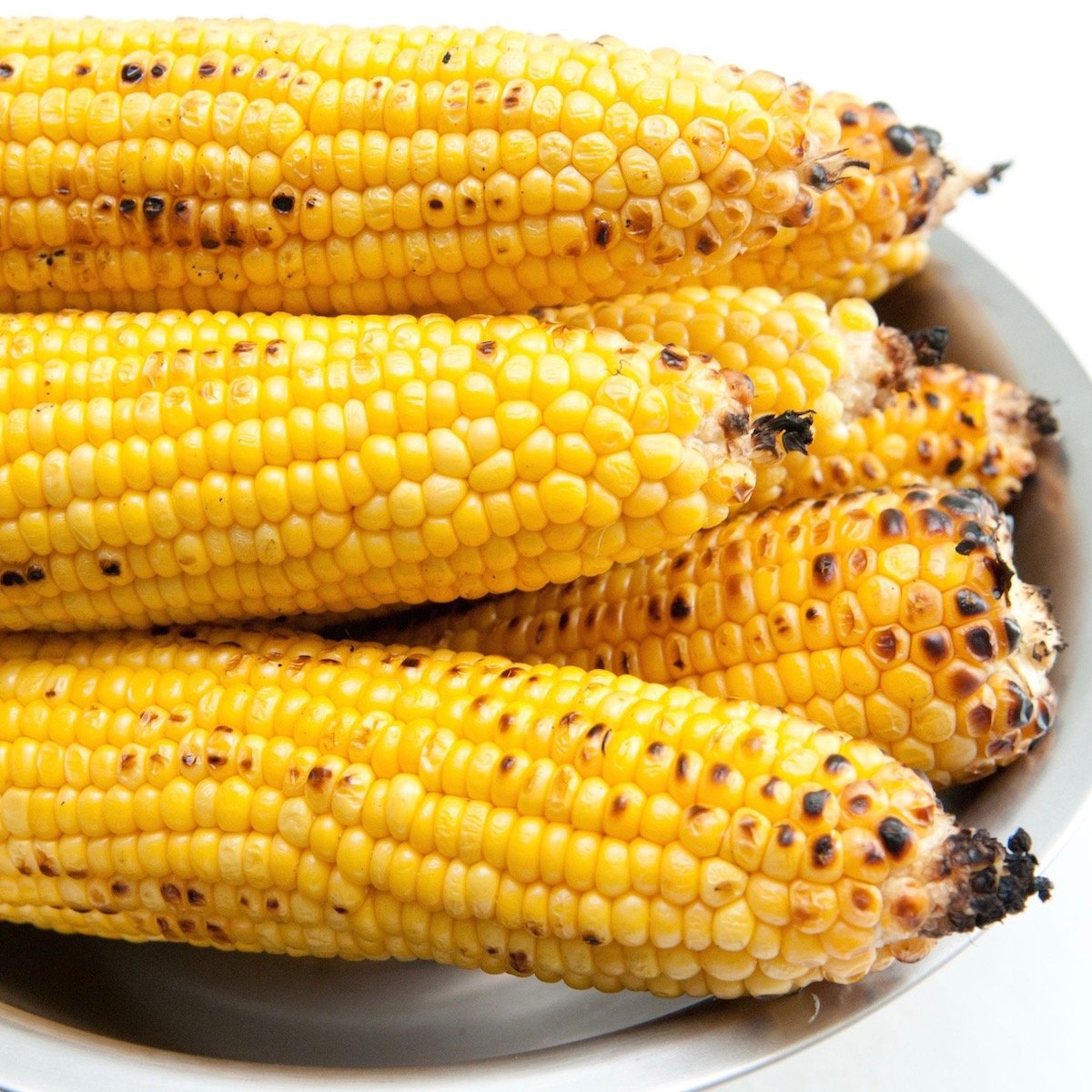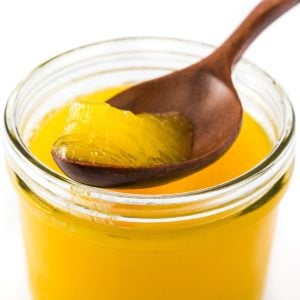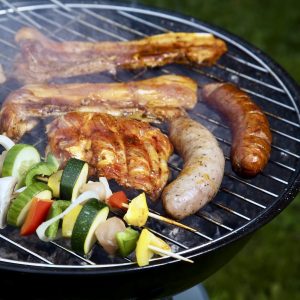Just How Much Heat Is Coming From My Grill?
Have you ever wondered how hot your grill gets when cooking burgers, hot dogs, or steaks? I’m not talking about the internal temperature of the grill area with the cover on, as shown by the thermometer most grills have today. Gas or charcoal, those thermometers are usually found at the top of the covers, not near the grate where the food is cooked.
The thermometer in the hood measures the temperature inside the grilling cavity when the hood is closed down. As soon as you open the hood, that temperature drops significantly. It may be important to know that temperature, but it doesn’t tell you how hot the surface is.
These hood thermometers are typically very inexpensive and need to be more accurate. In addition, if the hood materials are thin or poorly constructed, the reading from these thermometers can vary significantly.
I’ve also read there can be a big difference of as much as 50°F from where you are grilling your food from what’s measured at the top of the hood.
I’m interested in knowing the temperature of the heat being thrown off by the charcoal or gas burners just above the grilling grate. I’d like to know the temperature of the grate itself so I can compare it to the temperature of a frying pan. I’ll have to test this with my infrared thermometer.
This heat is difficult to determine. I’ve been researching this topic to find clues on determining the various temperatures and can’t find a definitive source. Some talk about BTUs, the British Thermal Unit of work, to raise the temperature of one pound of water by one degree Fahrenheit but I’m not sure how that helps me.
Yes, the more BTUs a gas grill may be rated, it may produce more heat, but it may just mean how much gas the grill uses, not how efficient it is. Also, as previously mentioned, if the grill is poorly constructed or made from thin or inferior metals, the heat won’t matter unless you’re grilling with the cover off.
This post is also about something other than the virtues of gas grilling compared to charcoal grilling or the pros and cons of each. Instead, I’m trying to understand how to measure the amount of heat a gas or charcoal grill emits from the heat source to better control what I’m cooking.
Inside Cooking
When I cook inside on my gas stove, a recipe might tell me to heat a pan over medium-high heat, so I set the knob to medium-high, and I’m done. The same goes for grilling. Many grill recipes tell you to heat your grill to medium or medium-high before starting.
On a gas grill, this is easy. First, you set the grill using knobs and hope they are calibrated to the right temperature. But what is that temperature? Does it matter?
On a charcoal grill, it’s not so easy. There are no knobs to adjust the heat so you have to manipulate the charcoal to get the desired temperature. How many briquettes, what type of briquette, how are they arranged in the grill, how long do you let them heat up and most importantly, how do you know when they are at the right temperature?
Help, I need answers.
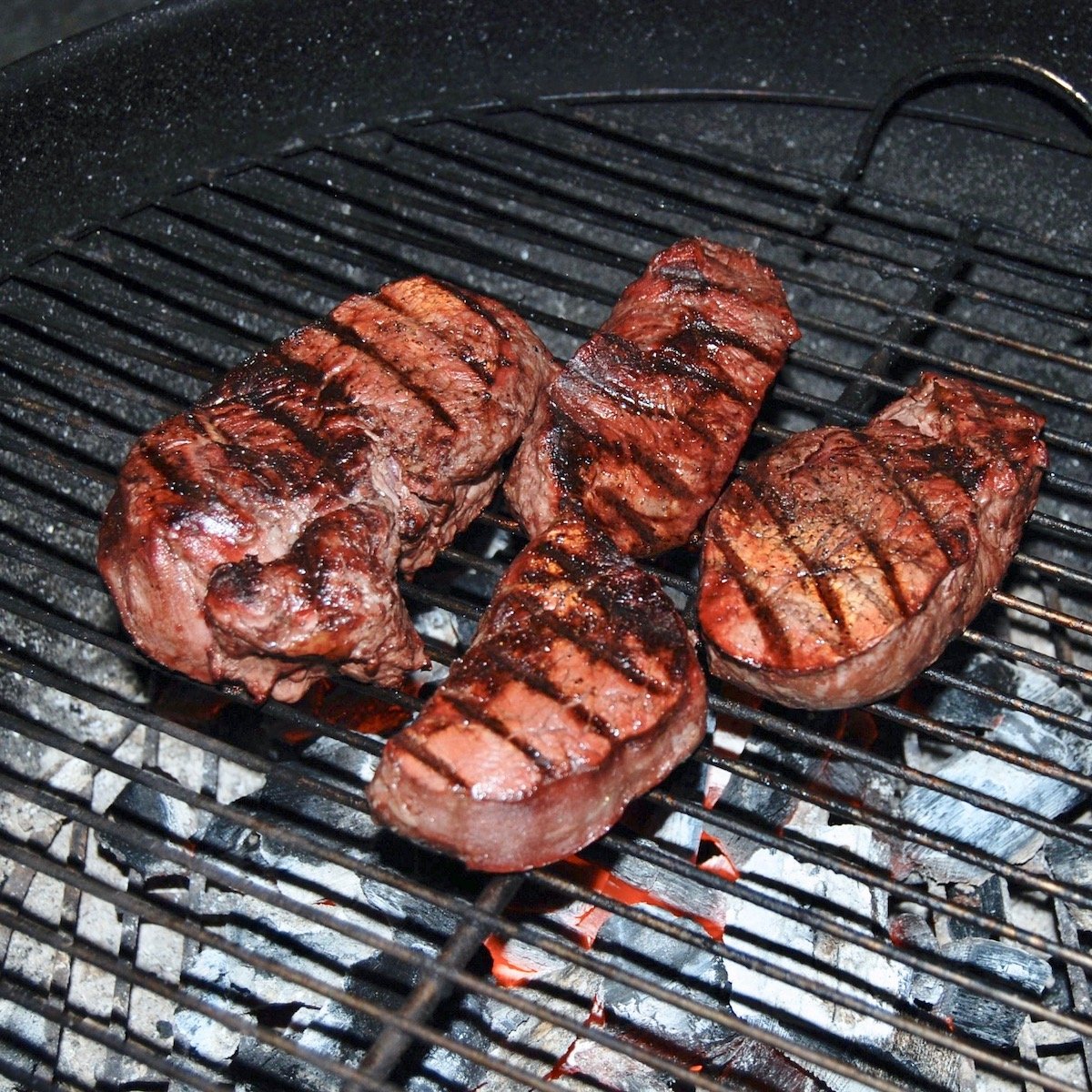
Why Temperature Matters
It matters because different foods cook best at different temperatures and sometimes the same food cooks best at different temperatures. For example, you may want to cook a steak at high heat for as long as possible to reach your desired doneness.
If you cook a boneless, skinless chicken breast at that same heat, the chicken’s exterior may char before the interior is cooked to the right temp. However, you may want to start those chicken breasts on high heat to get sear marks and immediately transfer them to a cooler part of the grill to finish cooking. This is an example of cooking the same ingredient at two different temperatures.
When grilling vegetables like onions or zucchini, I want to cook them at a lower temperature so they cook more slowly and don’t burn to a crisp immediately. So low and slow is the way I like to grill vegetables.
The Famous “Using Your Hand as a Thermometer” Approach
Many of the articles I found suggest you heat your grill, stick your hand about 4 inches from the top of the grate and start counting. Depending how long you can keep it there determines how hot the grill is.
It sounds wacky, but who hasn’t tried this little trick? I’m guessing anyone who has ever grilled using a charcoal grill has. Of course, it’s inaccurate, but it’s been working for grilling fans for a long time, so who am I to judge?
Here’s what I found on several websites about the “hand” temperature guide, but I realize they can vary from site to site. I guess it has to do with how tough your hands are.
WARNING: Be very careful when trying this, especially if you have sensitive hands; by all means, do not let your hand touch the grill.
Low Heat
225°F to 250°F
5 to 6 seconds
If you can hold your hand above the grate for 5 to 6 seconds, you’re not grilling but preparing the grill for barbecuing with some smoke. If you want to slow-cook some tough cuts of meat like the shoulder or briskets, this is the way to go.
Medium-Low Heat
250°F to 325°F
4 to 5 seconds
Too low to brown anything with direct heat, maybe too hot to slow cook (barbecue) for extended periods—best temperature for keeping foods warm or reheating them.
Medium Heat
325°F to 375°F
3 to 4 seconds
Now we’re getting somewhere. I won’t sear any meats or poultry at this temperature, but it’s a great temp for indirect cooking. I may start a chicken breast on another part of the grill at a much higher heat and then finish it here at this medium level with the hood down or on.
Medium-High Heat
375°F to 450°F
2 to 3 seconds
When the temperature goes from a starting heat between 450°F and 650°F down to this heat, figure you have about 15 minutes of cooking time at this temperature with the cover off before you need to start adding more coals. If you are cooking with gas, no worries.
I like to cook at this temperature when I’m grilling with the lid off and not going anywhere, so I can be sure nothing will flare up and burn. I want to move foods around from this medium-high heat to a lower temperature if needed. This is a good temperature range for burgers and thick fish fillets like swordfish or tuna.
High Heat
450°F to 650°F
1 to 2 seconds
Be careful time! Not only do you not want to burn your hand testing the temperature, but you also don’t want to ruin a very expensive steak by cooking it too long at these levels. You get these temperatures when the coals are either stacked in a pyramid or dumped from a grilling chimney before you spread them out.
Great for making quick grill marks before moving to a cooler part of the grill or searing just the outside of a tuna steak.
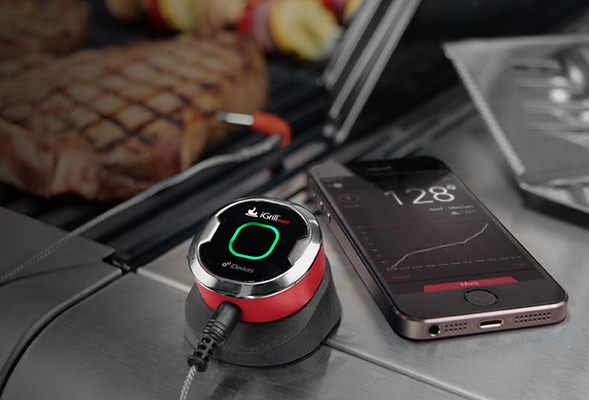
Alternative Method for Determining Grill Temperatures
So what if you don’t want to use your hand as a human thermometer or want your measurements to be more accurate? The best way to accomplish this would be to use thermometers.
I’m a big fan of ThermoWorks’ products, including the ThermaPen instant thermometers that I use to determine the internal temperatures of foods I cook. I don’t think I would use this thermometer for measuring the grill temperature, but its range is from -58.0 to 572.0°F and it works fast, so maybe I will test it out on a grill grate.
Another thermometer I want to test out is my iGrill mini. I can set the probe up like the professional barbecue teams do, with a ball of aluminum foil to hold the probe a couple of inches off the grate to measure the heat coming from the source. I read the results on my iPhone App.
This way, I can continuously measure the heat source where the meat will sit. I’ll be able to see how the temperatures change when I lift the hood and how long it takes to get back to the temperature after I close the hood.
Then I can see what kinds of readings I get with the Mastercool infrared thermometer with laser. Finally, I’ll see what the temperature of the grate reads and the piece of aluminum foil holding the iGrill mini probe.
And lastly, I can use an Outset Grill Surface Thermometer to see what the surface temperature is on the grill grate. You can also use this surface thermometer in one of your fry pans on your inside stovetop to see what your low, medium and high temperatures settings are producing.
Conclusions
I’m not sure it’s essential to know the exact temperature for low, medium, or high when cooking on your outside grill or what the exact temperature is being thrown off from the briquettes when cooking a steak unless you are someone like me who wants to know.
I don’t expect I’ll be measuring the surface heat every time I grill up some burgers or tuna steaks, but I do promise next time I grill to come back with some of my findings. I want to see and compare the readings I get from the various thermometers I own.

